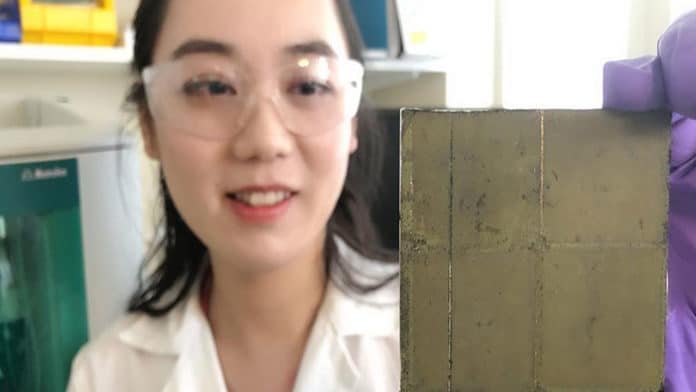Developed by scientists from the University of Cambridge, a new device can convert carbon dioxide, water, and sunlight into clean fuels. This wireless device-based on an advanced ‘photosheet’ technology- is a significant step toward achieving artificial photosynthesis.
Despite being a promising way to reduce carbon emissions, this new device could be scaled up and used on energy ‘farms’ similar to solar farms.
Achieving artificial photosynthesis with a high degree of selectivity is quite difficult. Thus, converting as much of the sunlight as possible into the fuel you want is better rather than be left with a lot of waste.
Professor Erwin Reisner, the paper’s senior author said, “In addition, storage of gaseous fuels and separation of by-products can be complicated – we want to get to the point where we can cleanly produce a liquid fuel that can also be easily stored and transported.”
The device do not require additional components or electricity. It solely relies on photocatalysts embedded on a sheet to produce a so-called photocatalyst sheet. The sheets are made up of semiconductor powders, which can be prepared in large quantities easily and cost-effectively.
Furthermore, the technology is more robust and produces clean fuel that is easier to store and shows potential for producing fuel products at scale.
First author Dr. Qian Wang from Cambridge’s Department of Chemistry said, “The test unit is 20 square centimetres in size, but the researchers say that it should be relatively straightforward to scale it up to several square meters. In addition, the formic acid can be accumulated in solution, and be chemically converted into different types of fuel.”
“We were surprised how well it worked in terms of its selectivity – it produced almost no by-products. Sometimes things don’t work as well as you expected, but this was a rare case where it actually worked better.”
“While this technology will be easier to scale up than the artificial leaf, the efficiencies still need to be improved before any commercial deployment can be considered. The researchers are experimenting with a range of different catalysts to improve both stability and efficiency.”
Professor Reisner said, “We hope this technology will pave the way toward sustainable and practical solar fuel production.”
Journal Reference:
- Qian Wang et al. ‘Molecularly engineered photocatalyst sheet for scalable solar formate production from carbon dioxide and water.’ Nature Energy (2020). DOI: 10.1038/s41560-020-0678-6
